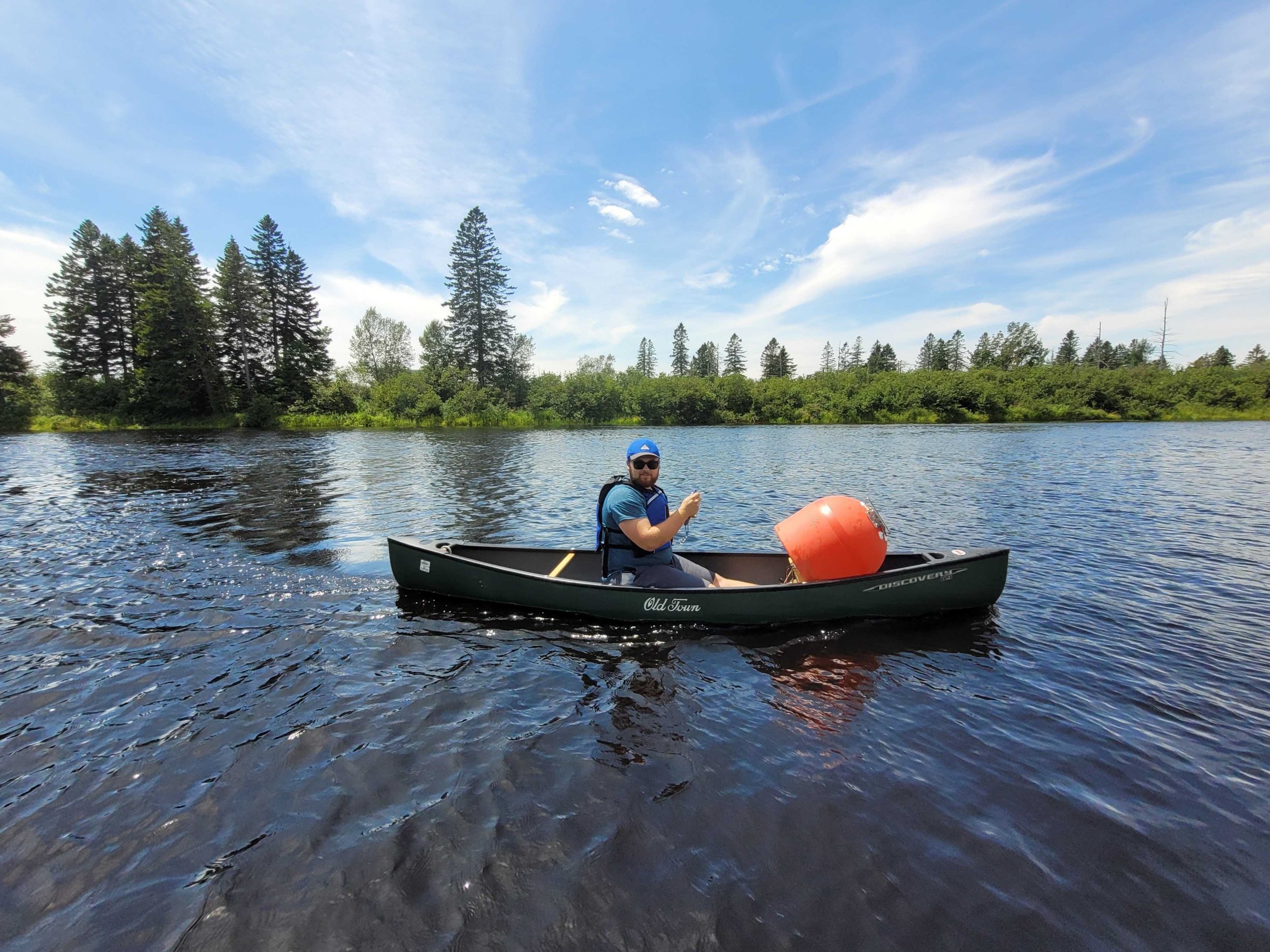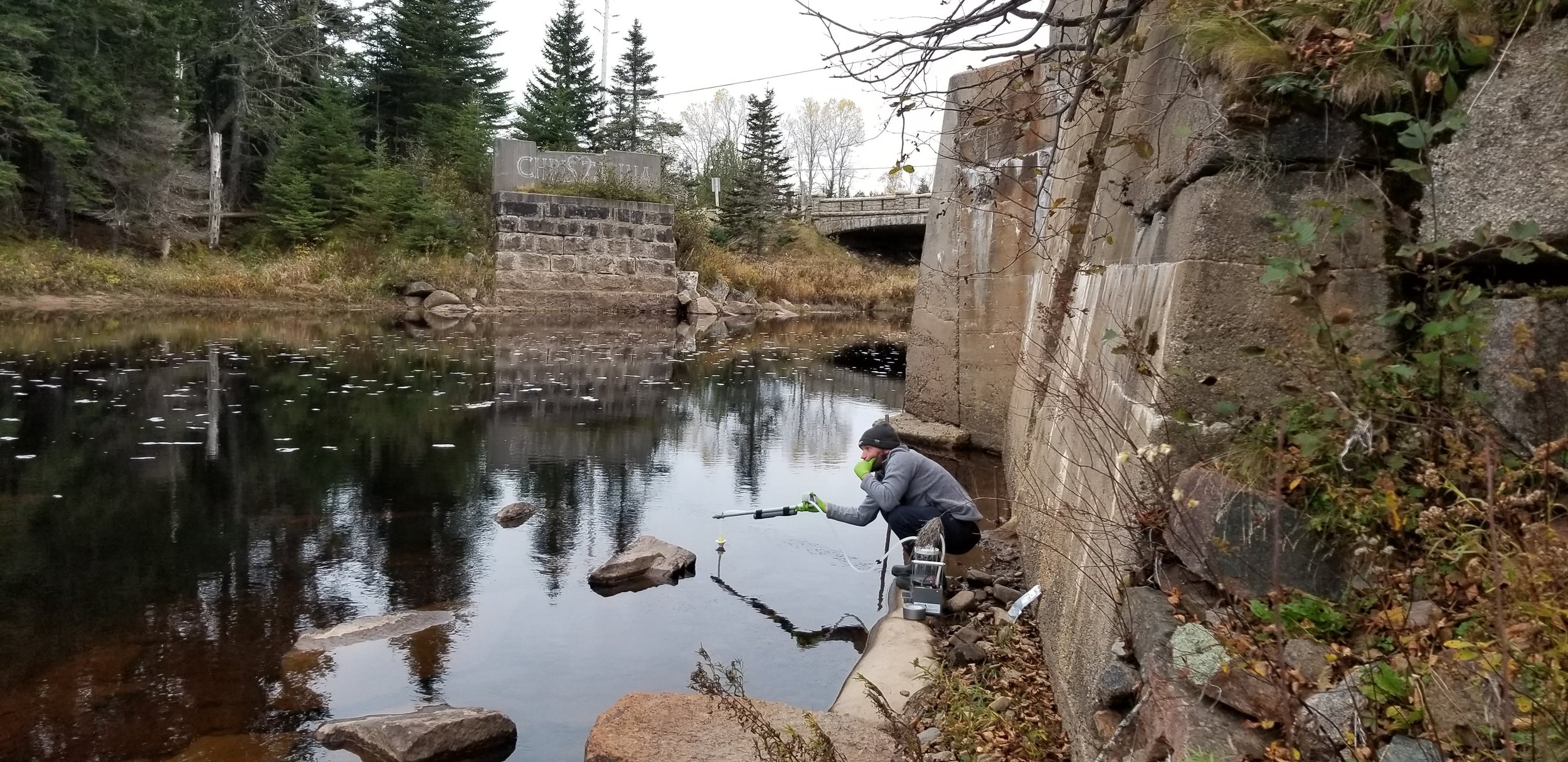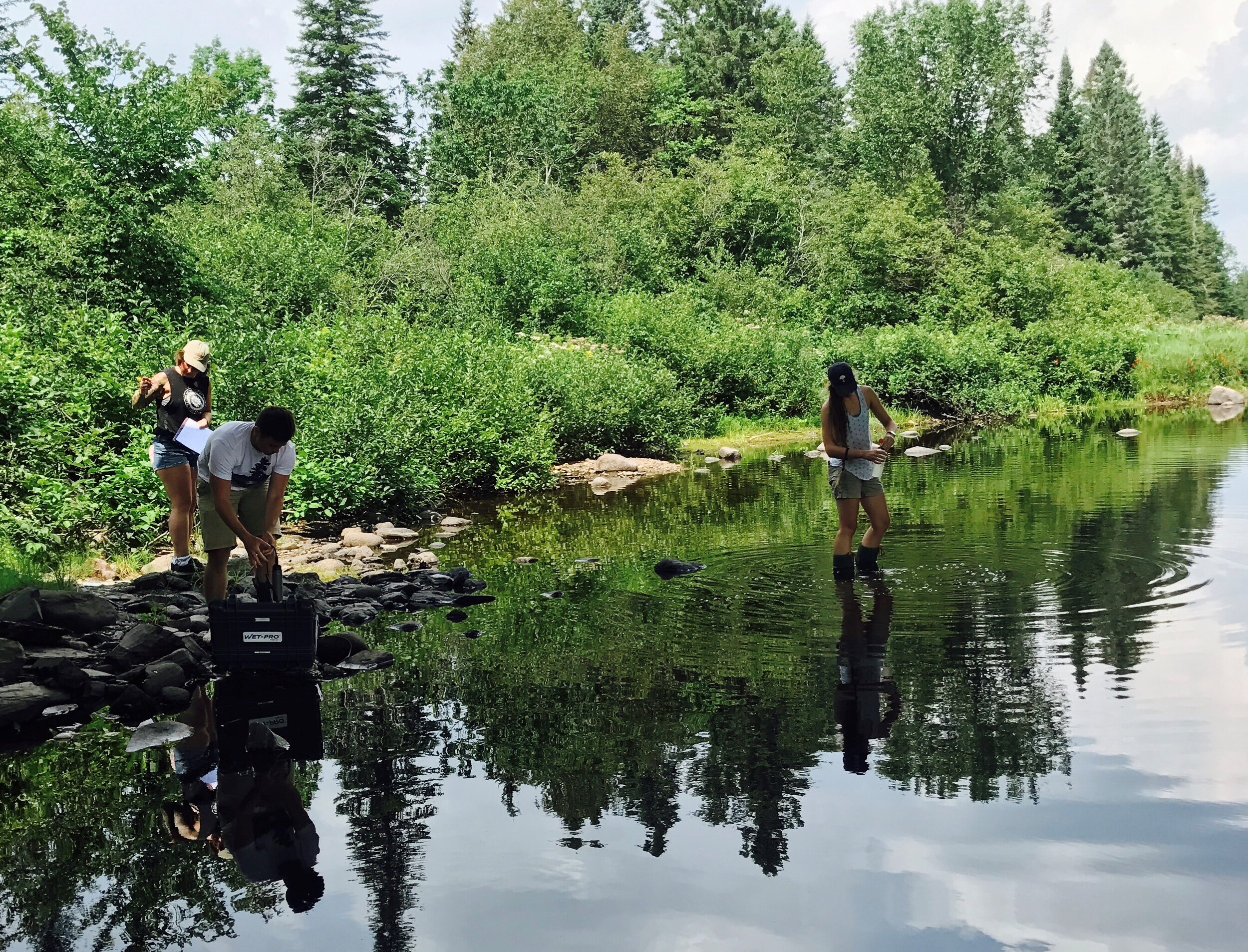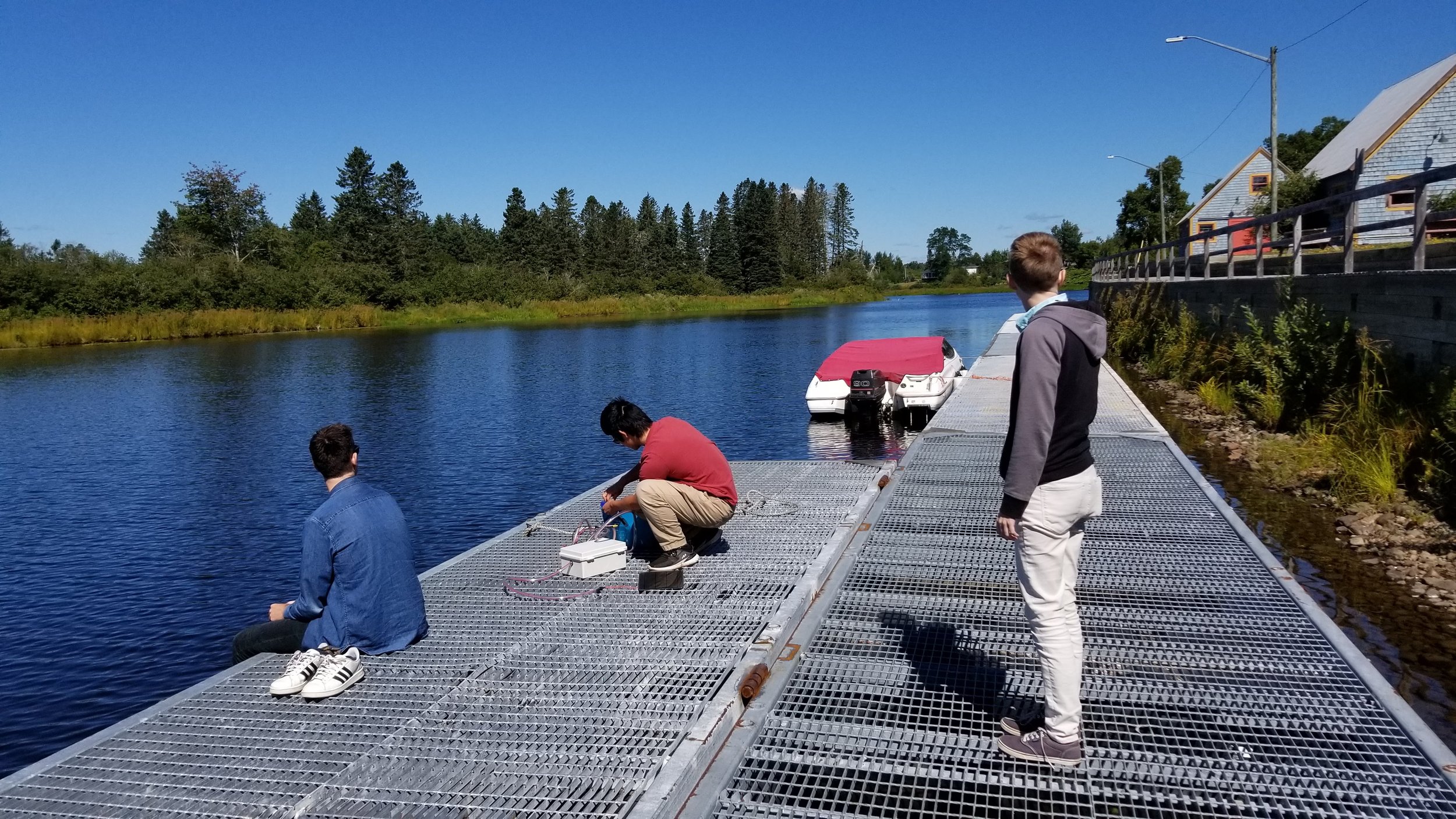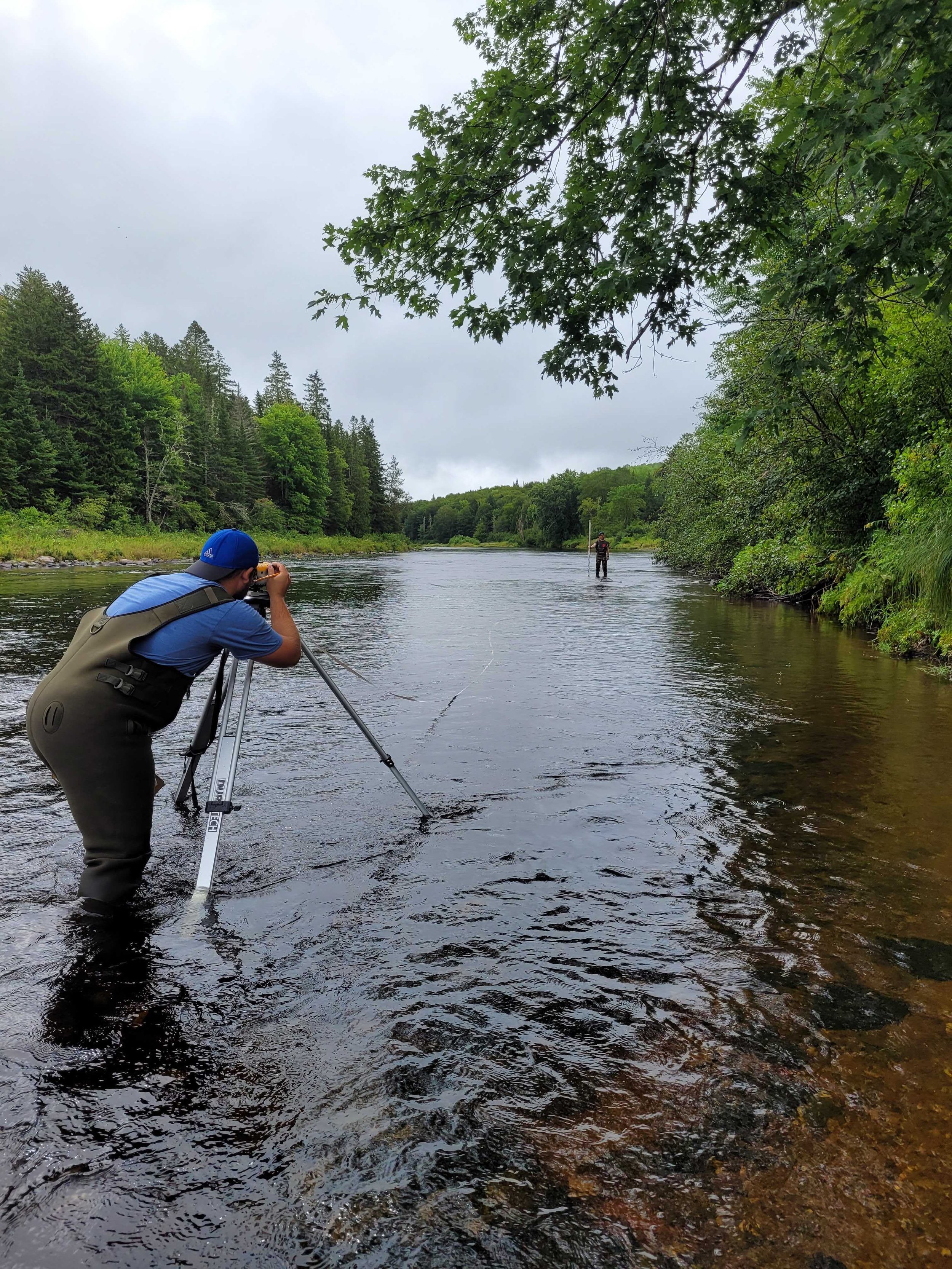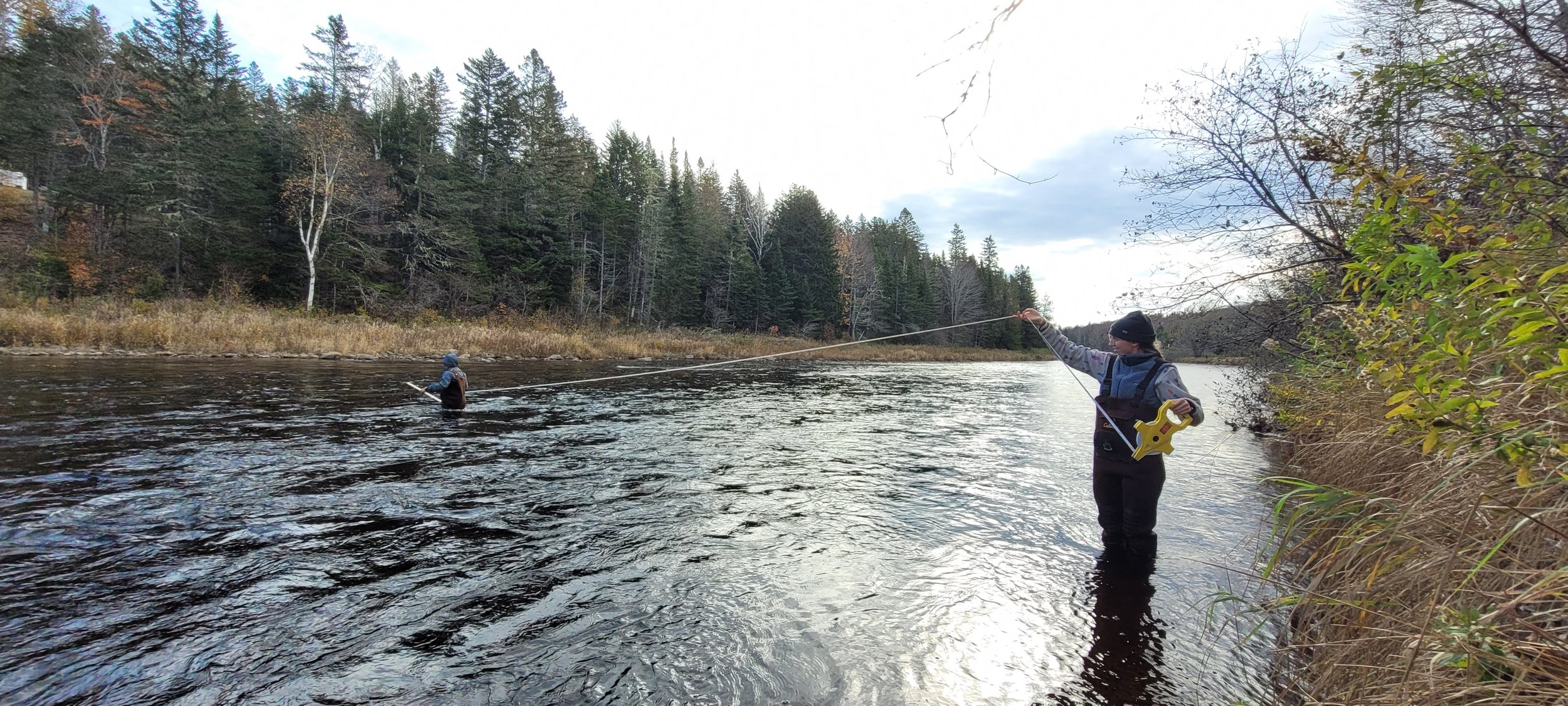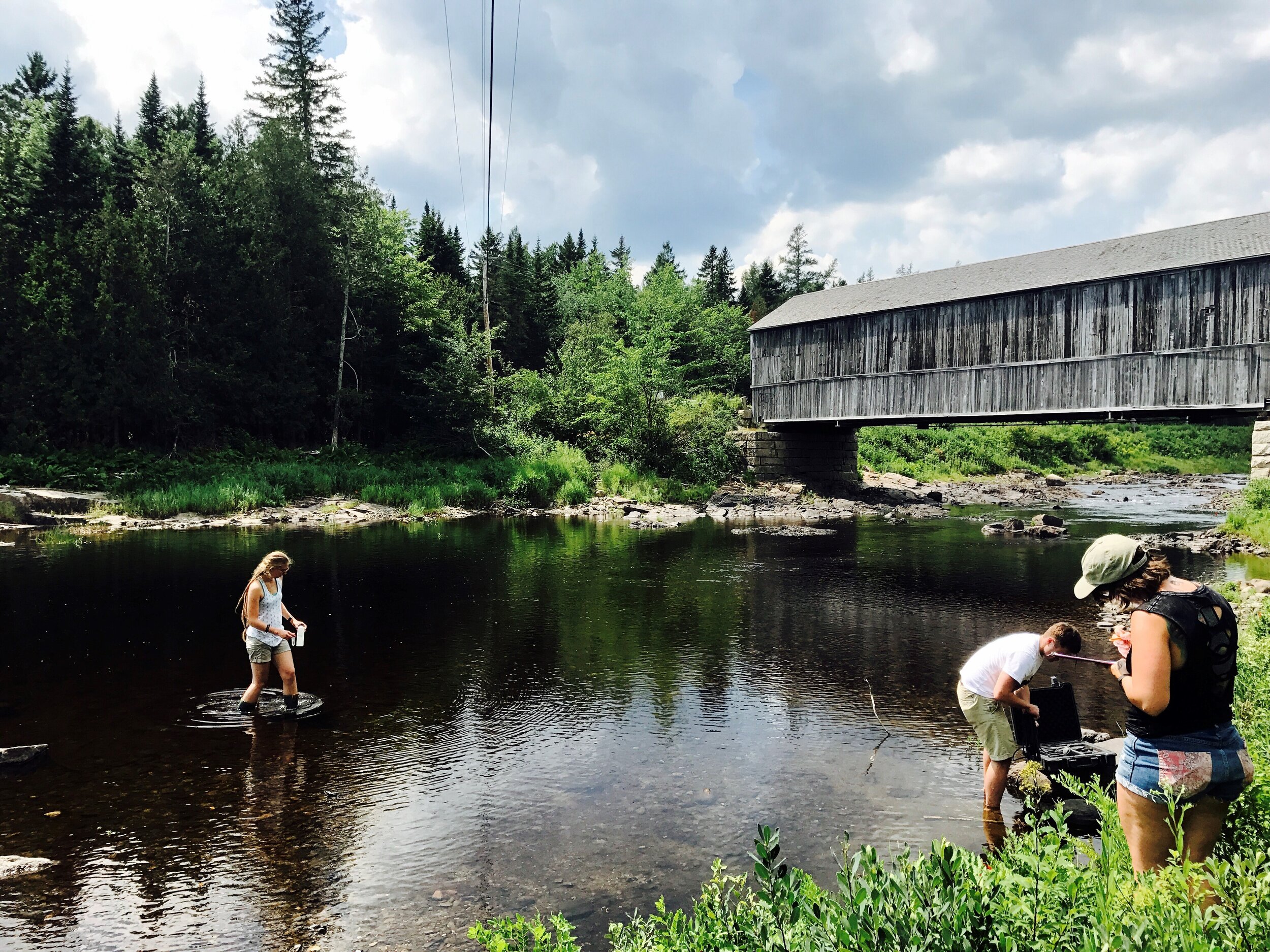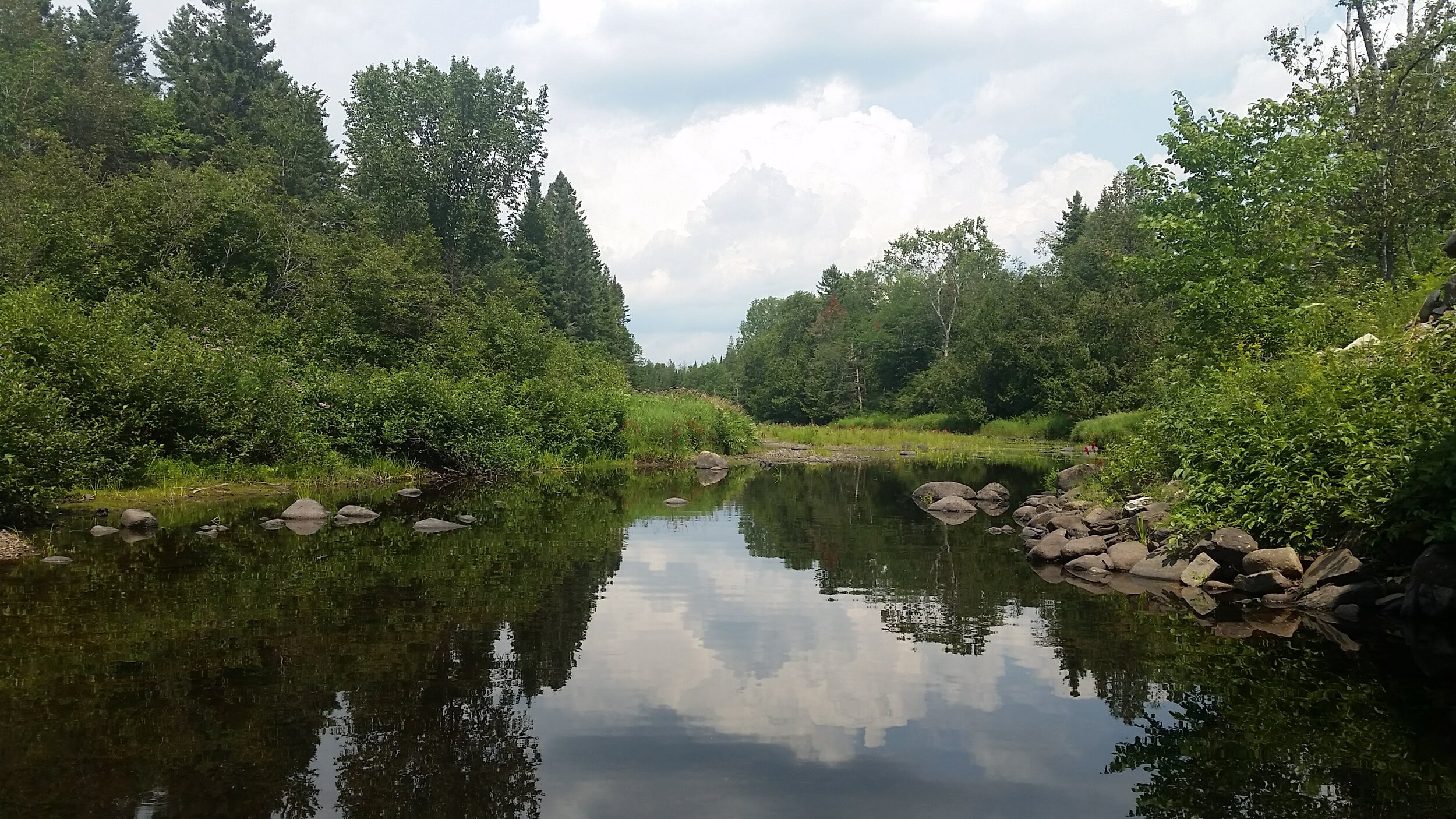Measuring the health of Linton Stream
WEST FUNDY WATERSHEDS
Since 1993, ECW has collected data on the health of freshwater ecosystems in the West Fundy Composite of watersheds. Stretching from Lepreau to the Digdeguash, in Eastern Charlotte County, New Brunswick, this composite of watersheds feeds Passamaquoddy Bay and the Fundy Isles from the edge of the Saint John watershed to the southwest.
This watershed provides ecosystem services and drinking water to 6 of New Brunswick’s 15 counties, and is made up of ecologically and socially important areas including rivers, lakes, estuaries, and wetlands. It also provides important grounds for indigenous, cultural, recreational, and socioeconomic activities including fishing, hunting, hiking, swimming, and boating.
Integrated Watershed Monitoring
In 2020, ECW created an Integrated Watershed Monitoring Plan (IWMP) for assessing the health of the entire West Fundy Composite Watershed. A standardized plan is essential for comparisons between years and between watersheds, and to gain an accurate picture of environmental and anthropogenic effects affecting the health of the watershed. Research surrounding watershed health monitoring in the province of New Brunswick identified three spheres of effective watershed monitoring: biological, physiochemical and hydromorphological.
Collecting benthic invertebrates (bugs that live on the bottom) for biological monitoring
Surveying to find the slope of the river
Biological: assessment of fish populations, benthic invertebrates, E. coli, and coliform bacteria. Fish are monitored through sampling environmental DNA (eDNA): a relatively new technology that involves trapping all DNA left in the water from fish as they swim by (feces, slime, scales) in a filter for laboratory analysis. Benthic invertebrates are sampled through CABIN protocols, and can be a clear indicator of water quality due to specific species being direct indicator species since they are sensitive to environmental changes.
Physiochemical: assessment of the chemistry of the water, including basic water quality measurements like temperature, pH, dissolved oxygen, and conductivity, as well as a wide array of nutrient, mineral and metal analysis.
Hydromorphological: assessment of the physical environment, including vegetation around the river, erosion, turbidity, and fluctuations in water levels throughout the summer.
One of our monitoring sites on the Lepreau River
In 2021, ECW started the baseline assessment of the West Fundy watershed utilizing the IWMP. We completed the monitoring at 11 sites in the four largest rivers in the West Fundy watershed (Digdeguash, Magaguadavic, New River and Lepreau). This level of monitoring will hopefully be expanded to include four more rivers in the West Fundy Composite watershed in the coming years.
The monitoring plan is a working document that ECW will continue to modify and refine based on observations in the field.
Thanks to the Government of New Brunswick Environmental Trust Fund for supporting this project.
Automated Water Quality & Cyanobacteria Monitoring
The automatic water quality monitoring station being tested in the Magaguadavic River
The collection of water quality samples can be time consuming and difficult to complete on a regular basis depending on staff requirements and time constraints. The ability to continually collect water quality data at specific intervals would be extremely beneficial to monitoring as a whole. To facilitate this, ECW begun construction of a self-contained automated buoy for monitoring water quality back in 2019. The buoy’s internal computer software recorded data from sensors dangling down below, and sent data to our office in real-time over the cell network. The buoy could monitor any parameter as long as the correct probe was attached.
However, there are other such units on the market. The Hammond River Angling Association was kind enough to share one with us in 2024 which monitors regular parameters like temperature and oxygen, but also monitors the conditions which might be conducive to a toxic cyanobacteria (blue-green algae) bloom. In late summer of 2024 we stationed one of these units near Canal Beach in Lake Utopia to help us predict cyanobacteria blooms before they occurred.
Thanks to RBC Tech For Nature for their support and funding for the design of this automatic monitoring station. Thanks to the Hammond River Angling Association for sharing their knowledge and equipment with us.
West Fundy Watersheds Program
ECW has completed a reassessment of the rivers' health, using the 20 year anniversary of the organization's first major monitoring initiative to launch a replica. In addition, monitoring on major lakes including Utopia, Chamcook, and Digdeguash have revealed the makeup of cyanobacteria communities and empowered landowners to organize and assess their own needs and remedies. The West Fundy Composite remains the heart of the organization and a key piece of the environmental management puzzle in the Outer Bay of Fundy.
Results include:
Assessing the freshwater of Eastern Charlotte County (2016)
Monitoring vulnerable southwest New Brunswick lakes (2013)
An integrated watershed management plan for the Magagauadavic (2014)
The West Fundy Watersheds program has received support from Environment and Climate Change Canada, the Department of Fisheries and Oceans, the New Brunswick Department of Environment and Local Government, the New Brunswick Department of Energy and Resource Development, and the Atlantic Salmon Conservation Foundation.
